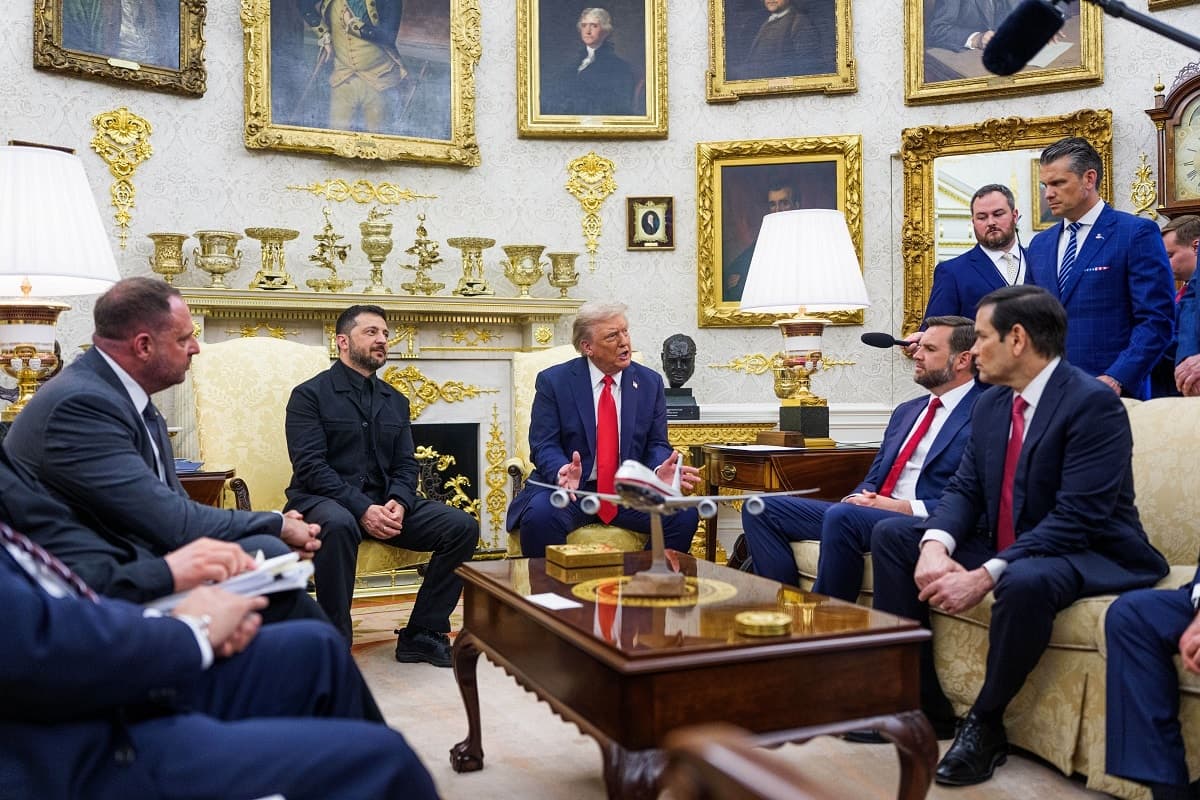
After what he described as a “very good” set of talks with Ukrainian President Volodymyr Zelenskyy and several European leaders, US President Donald Trump has launched efforts to organize a direct meeting between Zelenskyy and Russian President Vladimir Putin.
Speaking shortly after the White House meetings concluded, Trump announced on Truth Social that he had already spoken with Putin and begun preparations.
“There will be a meeting between Putin and [Zelenskyy],” Trump wrote. “Following the conclusion of today’s meetings, I called President Putin and started arrangements for a meeting between him and President [Zelenskyy] at a location still to be determined. After that meeting, there will be a trilateral summit with myself and the two presidents.”
Venue and timing still unclear for Putin and Zelenskyy summit, says Trump
So far, no date or location has been finalized for a Putin–Zelenskyy summit. Diplomatic sources have suggested Geneva and Budapest as possible venues, but Zelenskyy told reporters after the White House summit that “no date has been set.”
German Chancellor Friedrich Merz said he expected the meeting to take place within two weeks, though there was no immediate confirmation.

Territorial issues left out of Trump Washington talks with Putin and Zelenskyy
Conspicuously absent from the Washington talks was any discussion of territorial concessions, one of the most contentious aspects of any future negotiations.
Putin has demanded that Ukraine withdraw its forces from Donetsk, Luhansk, Kherson, and Zaporizhzhia—a condition Kyiv regards as unacceptable. Zelenskyy has repeatedly stated that under the Ukrainian constitution, no president has the authority to cede sovereign territory, especially areas not fully under Russian control.
Given the sensitivity of the issue, Trump and his European counterparts excluded the territorial question from their agenda with Zelenskyy. “There was no discussion today about territorial concessions,” Merz confirmed.
He likened Russia’s demand to asking the United States to give up Florida: “A sovereign state cannot simply decide to hand over land. This is a decision Ukraine must make itself during negotiations.”
Security guarantees top the list
Discussions in Washington centered on security guarantees for Ukraine—commitments that Western allies would intervene should Russia attack again after any peace deal.
Although Trump initially played down US involvement, his advisers acknowledged that guarantees were a central point of debate. “The guarantees are under discussion,” one senior official confirmed.
For Zelenskyy, progress on this front was encouraging. He called the talks “a significant step forward” and predicted clarity in the coming days.
“In fact, there is a package of our proposals worth $90 billion,” he said. “We also have agreements with the US president that when our exports open, the United States will purchase Ukrainian-made drones. This is very important for us.”
State Department to draft proposals
US Secretary of State Marco Rubio confirmed late Monday that the State Department would begin drafting proposals for security guarantees this week.
He said the process would be coordinated with NATO and European states already supplying large amounts of military aid to Kyiv.

Zelenskyy’s broader plan
According to documents cited by the Financial Times, Zelenskyy has put forward a plan that ties security guarantees to large US arms purchases financed largely by Europe. Under the proposal, Ukraine would commit to buying $100 billion worth of American weapons, funded by European partners.
The plan also foresees a $50 billion US–Ukraine venture to co-produce drones, leveraging Ukrainian expertise developed since Russia’s invasion in 2022.
While the document does not specify all weapons requested, Kyiv has made clear it wants at least ten Patriot air-defense systems to protect cities and infrastructure, alongside other missile and defense systems.
Reparations and sanctions
The draft also underscores Ukraine’s demand for reparations from Russia for war damages. Kyiv argues that compensation could be covered by the roughly $300 billion in Russian state assets frozen in Western countries.
It further insists that sanctions relief should only be granted if Moscow fully complies with a future peace settlement and “plays fair.” Zelenskyy’s proposal reiterates Kyiv’s appeal for a ceasefire—an idea Trump initially supported earlier this year. However, after meeting with Putin, Trump shifted his focus to achieving a more comprehensive peace agreement rather than a temporary halt in fighting.

A summit with uncertain prospects: Trump’s proposed future meeting between Putin and Zelenskyy
Trump’s push for a Putin–Zelenskyy meeting underscores the high stakes and fragile nature of the diplomatic process. While Putin has indicated he is ready to meet, analysts caution that Russia’s core demands on territory remain unchanged.
Diplomats warn that a durable settlement will be impossible without addressing sovereignty directly, no matter how much progress is made on security guarantees or arms packages.
For now, attention is fixed on the still-unconfirmed summit. If Putin and Zelenskyy do meet in the coming weeks, it would mark their first direct encounter since the war began—a moment that could prove pivotal in shaping the conflict’s future.
As Zelenskyy told reporters in Washington: “This is an important step forward. But the path to peace will require many more steps, and each must protect Ukraine’s sovereignty, security, and future.”

